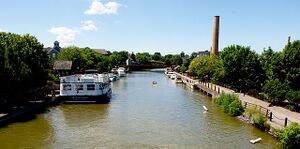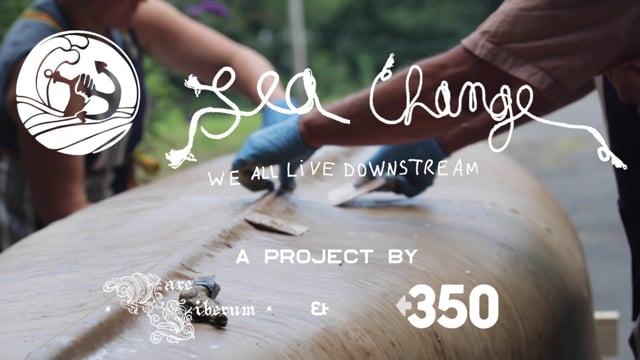
The New York State Community Action page highlights community-driven efforts to improve environmental sustainability, social equity, and economic stability across New York.
 From Seed Library to Seed Company: The story of K Greene and the Hudson Valley Seed Company, slowfoodusa.org (Aug 15, 2022)
From Seed Library to Seed Company: The story of K Greene and the Hudson Valley Seed Company, slowfoodusa.org (Aug 15, 2022)  The ‘world’s first library farm’ is home to plush gardens and community innovations, Shareable (Jul 05, 2022) — Since 2011, community members local to The Cicero Branch of the Northern Onondaga Public Library (NOPL) in Upstate New York have tended to a lively library farm, leading innovations in urban farming and food access.
The ‘world’s first library farm’ is home to plush gardens and community innovations, Shareable (Jul 05, 2022) — Since 2011, community members local to The Cicero Branch of the Northern Onondaga Public Library (NOPL) in Upstate New York have tended to a lively library farm, leading innovations in urban farming and food access.
Networks and sustainability initiatives[edit | edit source]
Climate action[edit | edit source]
SeaChange: We All Live Downstream, collaborative art & activism project, navigating the Hudson River, climate change, and water as commons in the summer and fall of 2014.
New York ranks 46th among the 50 states in the amount of greenhouse gases generated per person. This relative efficiency is primarily due to the state's higher rate of mass transit use.[1]
Biodiversity[edit | edit source]
Biodiversity, information from NYS Parks, Recreation, and Historic Preservation
Environment quality[edit | edit source]
Riverkeeper, environmental non-profit membership organization dedicated to the protection of the Hudson River and its tributaries, as well as the watersheds that provide New York City with its drinking water. (Wikipedia), see also Pace Environmental Litigation Clinic
Open spaces[edit | edit source]
Adirondack Trail Improvement Society - Genesee Valley Conservancy - New York State Office of Parks, Recreation, and Historic Preservation
Coasts[edit | edit source]
Community energy[edit | edit source]
Community Environmental Center, not-for-profit provider of energy efficiency, green building and sustainability services
Wikipedia: Solar power in New York, Wind power in New York
Cycling activism[edit | edit source]
wikipedia:List of New York State Bicycle Routes
Education for sustainability[edit | edit source]
wikipedia:List of nature centers in New York
Food activism[edit | edit source]
Reduce, reuse, repair and recycle[edit | edit source]
New York State Association for Reduction, Reuse and Recycling, organization which seeks to promotes use of recycling throughout New York State. It promotes a wide variety of techniques for reuse of resources, and also assists local communities who wish to expand and develop their recycling activities. W
Sharing[edit | edit source]
University Heights Tool Library, Buffalo
Sustainable transport activism[edit | edit source]
Wikipedia: New York transportation proposals
Walking: Wikipedia: Hiking trails in New York (category)
Waterways: Early transportation in New York State was primarily by rivers and canals. Today, the canals are primarily used for recreation. Wikipedia: New York, Canals
Towards sustainable economies =[edit | edit source]
Resources[edit | edit source]
Citizens data initiative[edit | edit source]
Energy & Environmental Data for New York
Other resources[edit | edit source]
News and comment[edit | edit source]
2021
Many things can be a commons - even an ageing commercial oldies radio station. How Radio Kingston (covering NY and the Hudson Valley) became its community's mirror, Jun 18[2]
2019
Good Work for Local Living Economies by @eldorn, Feb 18[3]
2016
Dam destruction major victory for Mohawk tribe, Dec 12[4]
How One Farm Is Reinventing Agriculture for Better Food and a Brighter Future, Nov 28[5]
New York Assembly Approves Climate Bill That Would Cut Emissions to Zero, Jun 1[6]
2015
The Wind and Sun Are Bringing the Shine Back to Buffalo, July 20[7]
New York just showed every other state how to do solar right, March 6[8]
2014
State's Top Court Says Towns Can Ban Fracking, June 30[9]
Tenfold solar expansion approved for New York state, April 25[10]
About New York State[edit | edit source]
New York, also called New York State, is a state in the Northeastern United States. One of the Mid-Atlantic states, it borders New Jersey, the Atlantic Ocean, New England, Canada and the Great Lakes. With almost 19.6 million residents, it is the fourth-most populous state in the United States and eighth-most densely populated as of 2023. New York is the 27th-largest U.S. state by area, with a total area of 54,556 square miles (141,300 km2).
New York has a varied geography. The southeastern part of the state, known as Downstate, encompasses New York City, the most populous city in the United States, with over twice the population of Los Angeles, the nation's second-largest city; Long Island, the nation's most populous island; and the suburbs and wealthy enclaves of the lower Hudson Valley. These areas are the center of the New York metropolitan area, a sprawling urban landmass, and account for approximately two-thirds of the state's population. The much larger Upstate area spreads from the Great Lakes to Lake Champlain, and includes the Adirondack Mountains and the Catskill Mountains (part of the wider Appalachian Mountains). The east–west Mohawk River Valley bisects the more mountainous regions of Upstate, and flows into the north–south Hudson River valley near the state capital of Albany. Western New York, home to the cities of Buffalo and Rochester, is part of the Great Lakes region and borders Lake Ontario and Lake Erie. Central New York is anchored by the city of Syracuse; between the central and western parts of the state, New York is dominated by the Finger Lakes, a popular tourist destination. To the south, along the state border with Pennsylvania, the Southern Tier sits atop the Allegheny Plateau, representing the northernmost reaches of Appalachia.
New York was one of the original Thirteen Colonies that went on to form the United States. The area of present-day New York had been inhabited by tribes of the Algonquians and the Iroquois Confederacy Native Americans for several thousand years by the time the earliest Europeans arrived. Stemming from Henry Hudson's expedition in 1609, the Dutch established the multiethnic colony of New Netherland in 1621. England seized the colony from the Dutch in 1664, renaming it the Province of New York. During the American Revolutionary War, a group of colonists eventually succeeded in establishing independence, and the state ratified the then new United States Constitution in 1788. From the early 19th century, New York's development of its interior, beginning with the construction of the Erie Canal, gave it incomparable advantages over other regions of the United States. The state built its political, cultural, and economic ascendancy over the next century, earning it the nickname of the "Empire State." Although deindustrialization eroded a portion of the state's economy in the second half of the 20th century, New York in the 21st century continues to be considered as a global node of creativity and entrepreneurship, social tolerance, and environmental sustainability.
Near you[edit | edit source]
Ithaca, New York - New York City
References


